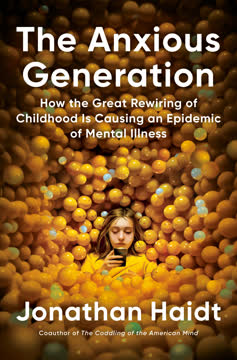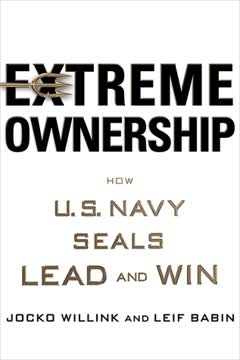نکات کلیدی
1. درک انگیزههای ناخودآگاه برای اتخاذ تصمیمات بهتر
انگیزههای ناخودآگاه بیشتر از آنچه تصور میکنیم بر تصمیمات ما تأثیر میگذارند. درک این انگیزهها میتواند بهطور قابلتوجهی فرآیند تصمیمگیری ما را بهبود بخشد. سه مدل کلیدی به ما کمک میکنند تا نیازهای ناخودآگاه خود را درک کنیم:
-
هرم نیازهای مازلو
- تأمین نیازهای فیزیولوژیکی
- ایمنی
- عشق و تعلق
- عزت نفس
- خودتحققیابی
-
شش نیاز اساسی انسانی تونی رابینز
- قطعیت
- عدم قطعیت و تنوع
- اهمیت و منحصر به فرد بودن
- ارتباط
- رشد
- مشارکت
-
نیازهای اساسی انسانی مکس-نیف
- معیشت
- حفاظت
- محبت
- درک
- مشارکت
- تفریح
- خلاقیت
- هویت
- آزادی
با شناسایی نیازهایی که ما را هدایت میکنند، میتوانیم تصمیمات آگاهانهتری بگیریم که با انگیزهها و ارزشهای واقعیمان همراستا باشد.
2. شناسایی و غلبه بر سوگیریهای شناختی در تصمیمگیری
سوگیریهای شناختی میانبرهای ذهنی هستند که میتوانند به تصمیمگیریهای ضعیف منجر شوند. برخی از سوگیریهای رایج شامل:
- ترجیح سادگی
- تکیه بر تضاد
- اجتناب از هرگونه ضرر
- کاهش ریسک
- سوگیری ناخودآگاه
- سوگیری تأیید
- خطای قمارباز
- یادآوری خوشبینانه
برای غلبه بر این سوگیریها:
- باورها و فرضیات اولیه خود را زیر سؤال ببرید
- به دنبال دیدگاههای متنوع باشید
- تصمیمات را از زوایای مختلف تحلیل کنید
- به وضعیت عاطفی خود هنگام اتخاذ تصمیم توجه کنید
با شناسایی و تلاش فعال برای مقابله با این سوگیریها، میتوانیم تصمیمات منطقیتر و مؤثرتری بگیریم.
3. فراتر از فهرستهای ساده مزایا و معایب بروید
در حالی که فهرستهای مزایا و معایب میتوانند برای تصمیمات ساده مفید باشند، اما معمولاً برای انتخابهای پیچیده ناکافی هستند. برای بهبود این روش:
- اهمیت هر عامل را کمیسازی کنید (مقیاس ۰-۱۰)
- تفسیرهای مختلف نتایج را در نظر بگیرید:
- طرفی را انتخاب کنید که مجموع بالاتری دارد
- فقط در صورتی اقدام کنید که مزایا دو برابر معایب باشند
- کمیسازی را به موقعیتهای خاص تطبیق دهید:
- پول صرفهجویی شده
- زمان صرفهجویی شده
- دستیابی به هدف
- تأثیر عاطفی
- عوامل ثابت را در مقابل عواملی که قابل تغییر هستند شناسایی کنید
- از این فرآیند برای کشف آنچه واقعاً برای شما مهم است استفاده کنید
- در صورت امکان به عوامل کلیدی بهطور مستقل رسیدگی کنید
با افزودن عمق و ظرافت به فهرست سنتی مزایا و معایب، میتوانید تصمیمات آگاهانهتر و شخصیسازیشدهتری بگیرید.
4. تأثیر خودخواهی بر انتخابهای خود را مدیریت کنید
تأثیر خودخواهی بر تصمیمگیری میتواند قابلتوجه و غالباً مضر باشد. رفتارهای رایج ناشی از خودخواهی شامل:
- سرزنش دیگران
- انکار
- توجیه
- جستجوی پذیرش اجتماعی
برای مدیریت تأثیر خودخواهی:
- خودآگاهی و صداقت را تمرین کنید
- شناسایی کنید که چه زمانی از ترس یا ناامنی عمل میکنید
- پذیرش اشتباه را بهعنوان بخشی طبیعی از رشد در آغوش بگیرید
- بر حقایق و شواهد تمرکز کنید نه توجیهات
با شناسایی و کاهش تأثیر خودخواهی، میتوانیم تصمیماتی بر اساس واقعیت و نه غریزههای خودمحافظتی بگیریم.
5. از روش شش کلاه برای تحلیل جامع تصمیمات استفاده کنید
روش شش کلاه ادوارد دِ بونو یک رویکرد ساختاریافته برای تصمیمگیری ارائه میدهد:
- کلاه سفید (شرلوک هولمز): تمرکز بر جمعآوری و تحلیل اطلاعات
- کلاه قرمز (فروید): بررسی احساسات و شهود
- کلاه سیاه (ایور): شناسایی مشکلات و ریسکهای احتمالی
- کلاه زرد (تشویقکننده): در نظر گرفتن مزایا و فرصتها
- کلاه سبز (پابلو پیکاسو): تولید راهحلها و گزینههای خلاقانه
- کلاه آبی (هنری فورد): مدیریت فرآیند تصمیمگیری و ادغام دیدگاهها
با بررسی سیستماتیک یک تصمیم از این زوایای مختلف، میتوانید تحلیل جامعتر و متوازنی انجام دهید.
6. غلبه بر فلج تحلیلی و تردید
فلج تحلیلی تنها یک اصطلاح فانتزی نیست. این یک مشکل واقعی است که میتواند شما را از هر چیزی که در زندگی برایتان مهم است، از جنبههای شخصی تا حرفهای، بازدارد.
برای غلبه بر فلج تحلیلی:
- درک کنید که بیشتر تصمیمات قابلبرگشت هستند
- فیلترها و مرزهای سختگیرانهای اعمال کنید
- به دنبال "کافی خوب" باشید نه کمال
- در تفکر قضاوتی بهطور عمدی شرکت کنید
- یک اقدام پیشفرض و محدودیت زمانی تعیین کنید
- از اصل پارتو ۸۰/۲۰ استفاده کنید: ۸۰٪ ارزش از ۲۰٪ تلاش بهدست میآید
- به یاد داشته باشید که تلاش برای کمال معمولاً به بازدهی کمتری منجر میشود
- با تمرین تصمیمگیری سریعتر در مسائل کوچک، اعتماد به نفس خود را افزایش دهید
با اجرای این استراتژیها، میتوانید بر تردید غلبه کرده و تصمیمات بهموقعتری بگیرید بدون اینکه کیفیت را فدای آن کنید.
7. بهطور مؤثر در تصمیمگیری گروهی عمل کنید
تصمیمگیری گروهی میتواند فرآیندی حساس و ناکارآمد باشد، اما اگر به آن اجازه دهید، میتواند به روشن شدن نقاط کور بزرگ شما کمک کند.
برای حداکثر کردن اثربخشی تصمیمگیری گروهی:
-
رویکرد مناسب را انتخاب کنید:
- دیکتاتوری
- مشورتی
- رأیگیری
- اجماع
-
از تکنیکهایی مانند:
- رأیگیری رتبهای
- چندین رأی برای هر نفر
- تکنیک گروه نامی
- با تشویق دیدگاههای متنوع، به مقابله با تفکر گروهی بپردازید
- فضایی امن برای ارتباطات باز ایجاد کنید
- سیاستهایی مانند "بدون قطع کردن" یا "هیچ ایده بدی وجود ندارد" را پیادهسازی کنید
با بهرهگیری از نقاط قوت تصمیمگیری گروهی و کاهش ضعفهای آن، میتوانید به نتایج متوازن و بینشمندتری دست یابید.
8. از احساسات برای تصمیمگیری بهتر استفاده کنید
در حالی که احساسات گاهی میتوانند به انتخابهای ضعیف منجر شوند، اما آنها نیز برای تصمیمگیری ضروری هستند. تحقیقات نشان میدهد که افرادی که پردازش عاطفی آنها مختل شده، حتی در اتخاذ تصمیمات ساده نیز دچار مشکل میشوند.
احساسات در تصمیمگیری کمک میکنند بهوسیله:
- ارائه پاسخهای سریع بر اساس تجربیات گذشته
- ارائه بینشهای شهودی که منطق ممکن است از دست بدهد
- انگیزه دادن به عمل و تعهد به انتخابها
برای بهرهبرداری مؤثر از احساسات:
- احساسات خود را شناسایی و به رسمیت بشناسید
- شناسایی کنید که چگونه احساسات ممکن است بر دیدگاه شما تأثیر بگذارند
- ورودی عاطفی را با تحلیل منطقی متعادل کنید
- از تأثیرات عاطفی خارجی آگاه باشید (مانند شش سلاح تأثیرگذاری چالدینی)
با ادغام هوش عاطفی با تفکر منطقی، میتوانید تصمیمات جامعتر و رضایتبخشتری بگیرید.
9. از روش WRAP برای انتخابهای بهینه استفاده کنید
روش WRAP که توسط چیپ و دن هیث توسعه یافته، چارچوبی جامع برای تصمیمگیری ارائه میدهد:
W - گزینههای خود را گسترش دهید
- فراتر از انتخابهای واضح نگاه کنید
- گزینههای متعددی را در نظر بگیرید
- عناصر گزینههای مختلف را ترکیب کنید
R - فرضیات خود را واقعیتسنجی کنید
- به دنبال دیدگاههای متنوع باشید
- ایدهها را در آزمایشهای کوچک مقیاس آزمایش کنید
- موانع احتمالی و نحوه غلبه بر آنها را در نظر بگیرید
A - فاصله بگیرید
- از احساسات فوری فاصله بگیرید
- عواقب بلندمدت را در نظر بگیرید
- از خود بپرسید که چه توصیهای به یک دوست میکنید
P - آماده باشید که اشتباه کنید
- نتایج مثبت و منفی را پیشبینی کنید
- برنامههای پشتیبان ایجاد کنید
- تلههایی برای علامتگذاری زمان تجدیدنظر تنظیم کنید
با پیروی از این روش، میتوانید تصمیمات جامعتر و با دقت بیشتری بگیرید که به طیف وسیعی از عوامل و نتایج احتمالی توجه میکند.
آخرین بهروزرسانی::
FAQ
What is "The Science of Intelligent Decision Making" by Peter Hollins about?
- Comprehensive guide to decisions: The book explores the science and psychology behind how we make decisions, aiming to help readers think more clearly, save time, and maximize happiness.
- Focus on practical methods: Peter Hollins provides actionable frameworks, mental models, and checklists to improve decision-making in personal and professional life.
- Addresses common pitfalls: It delves into why people struggle with indecision, cognitive biases, and emotional influences that lead to sub-optimal choices.
- Goal of the book: The ultimate aim is to help readers destroy indecision and become more confident, effective decision-makers.
Why should I read "The Science of Intelligent Decision Making" by Peter Hollins?
- Understand your own mind: The book helps you uncover subconscious motivations and cognitive traps that affect your choices.
- Practical improvement: It offers step-by-step methods and mental checklists to make better, faster, and more satisfying decisions.
- Applicable to all areas: Whether for career, relationships, or daily life, the advice is relevant and actionable.
- Boosts confidence and happiness: By learning to avoid indecision and poor choices, you can save time, reduce stress, and increase your overall well-being.
What are the key takeaways from "The Science of Intelligent Decision Making"?
- Subconscious drives matter: Most decisions are influenced by subconscious needs and desires, which can be understood through models like Maslow’s Hierarchy of Needs.
- Decision fatigue is real: Your ability to make good decisions decreases with stress, fatigue, and too many trivial choices.
- Cognitive biases are traps: Recognizing and counteracting biases like loss aversion, confirmation bias, and the zero-risk bias is crucial.
- Structured methods help: Using frameworks like the Six Hats Method, WRAP, and quantified pros and cons lists leads to better outcomes.
How does Peter Hollins define and address indecision in "The Science of Intelligent Decision Making"?
- Indecision as analysis paralysis: Hollins describes indecision as being stuck due to fear of making the wrong choice or seeking perfection.
- Root causes: It often stems from lack of confidence, fear of judgment, and overwhelming options.
- Actionable solutions: The book suggests setting boundaries, using default choices, and aiming for “good enough” rather than perfect.
- Reversibility of decisions: Hollins emphasizes that most decisions are reversible, so taking action is usually better than endless deliberation.
What are the main decision-making models and frameworks discussed in "The Science of Intelligent Decision Making"?
- Maslow’s Hierarchy of Needs: Explains how unmet needs at different levels drive our decisions.
- Tony Robbins’ Six Human Needs: Outlines certainty, variety, significance, connection, growth, and contribution as key motivators.
- Max-Neef’s Fundamental Human Needs: Adds nuance with nine needs, including subsistence, protection, affection, and freedom.
- Six Hats Method: Encourages viewing decisions from six perspectives—logical, emotional, pessimistic, optimistic, creative, and organizational.
- WRAP Method: Stands for Widen your options, Reality-test assumptions, Attain distance, and Prepare to be wrong.
How does "The Science of Intelligent Decision Making" by Peter Hollins explain cognitive biases and decision traps?
- Definition of cognitive biases: These are mental shortcuts or errors in thinking that lead to flawed decisions.
- Common biases covered: The book details simplicity preference, contrast effect, loss aversion, zero-risk bias, unconscious bias, confirmation bias, gambler’s fallacy, and rosy retrospection.
- Impact on choices: These biases can cause you to ignore relevant information, overvalue certain options, or make irrational decisions.
- Strategies to counteract: Hollins recommends self-awareness, questioning assumptions, and using structured frameworks to minimize bias.
What is the Six Hats Method in "The Science of Intelligent Decision Making" and how can it improve decisions?
- Six perspectives: The method involves “wearing” six different hats—white (facts), red (emotions), black (pessimism), yellow (optimism), green (creativity), and blue (organization).
- Holistic analysis: By systematically considering each perspective, you ensure all angles are covered and avoid tunnel vision.
- Practical application: Assigning hats to group members or yourself helps structure discussions and decision processes.
- Reduces blind spots: This method helps uncover hidden factors and balances emotional and logical considerations.
How does Peter Hollins recommend using pros and cons lists in "The Science of Intelligent Decision Making"?
- Quantify importance: Assign numerical values (0-10) to each pro and con based on significance, rather than treating all factors equally.
- Compare totals: Make decisions based on which side has a higher total value, or require the pros to outweigh cons by a significant margin before acting.
- Adapt to context: Tailor the criteria (money, time, happiness, etc.) to fit the specific decision at hand.
- Identify alternatives: Sometimes, analyzing the list reveals that addressing a single factor (e.g., comfort) is more effective than making a major change.
What is decision fatigue according to "The Science of Intelligent Decision Making" by Peter Hollins, and how can you avoid it?
- Definition: Decision fatigue is the decline in decision quality after making too many choices, due to limited mental resources.
- Symptoms: Leads to impulsive decisions or procrastination, especially later in the day or after many trivial choices.
- Prevention strategies: Make important decisions early, automate or ignore trivial choices, and take breaks to recharge.
- Role of stress: Stress and anxiety further deplete decision-making capacity, so managing them is essential for good choices.
How does "The Science of Intelligent Decision Making" address the role of emotions and ego in decision-making?
- Emotions are inevitable: The book explains that emotions can’t be separated from decisions and are necessary for motivation and action.
- Ego’s defense mechanisms: Blaming, denial, and rationalization protect self-esteem but can distort reality and lead to poor choices.
- Social acceptance: Fear of judgment and desire for approval often drive sub-optimal decisions.
- Self-awareness is key: Recognizing emotional and ego-driven influences allows for more honest and effective decision-making.
What is the WRAP method in "The Science of Intelligent Decision Making" by Peter Hollins, and how does it work?
- Widen your options: Don’t settle for the first or most obvious choices; generate more alternatives.
- Reality-test your assumptions: Challenge your ideas, seek disconfirming evidence, and stress-test your plans.
- Attain distance: Step back emotionally and give yourself time before finalizing a decision.
- Prepare to be wrong: Plan for failure by having backup options and being ready to adapt if things don’t go as expected.
What are the best quotes from "The Science of Intelligent Decision Making" by Peter Hollins and what do they mean?
- “The real key is to think about what you’re thinking, and pay attention to what you’re paying attention to.”
- Encourages meta-cognition and self-awareness as the foundation of smart decisions.
- “Perfect is the enemy of good enough.”
- Warns against analysis paralysis and the pursuit of unattainable perfection.
- “If you aren’t behind an option with a huge degree of certainty, then it’s as good as a lack of support.”
- Advocates for the “heck yes or no” approach to avoid lukewarm, regretful choices.
- “You can’t remove emotion from the decision-making process because it’s part of your personal logic.”
- Reminds readers that emotions are integral, not obstacles, to making choices.
- “When you have more information about yourself, everything else becomes clearer instantly. Fixate on your priorities; almost everything else is chatter.”
- Stresses the importance of self-understanding and focusing on what truly matters.
نقد و بررسی
کتاب علم تصمیمگیری هوشمند نظرات متفاوتی را به خود جلب کرده و میانگین امتیاز آن ۳.۹۱ از ۵ است. خوانندگان از خلاصهی مختصر مفاهیم تصمیمگیری و تعصبات روانشناختی آن استقبال کردهاند. برخی آن را مقدمهای عالی میدانند، در حالی که دیگران خواستار عمق بیشتر و کاربردهای عملیتر هستند. این کتاب به خاطر دسترسیپذیری و پتانسیل آن برای بهبود مهارتهای تصمیمگیری مورد تحسین قرار گرفته است. با این حال، انتقادات شامل کوتاهی آن، عدم وجود چارچوبهای جامع و مشکلات گاهبهگاه در قالببندی میباشد. بهطور کلی، این کتاب بهعنوان یک مطالعهی سریع و آموزنده در نظر گرفته میشود که بینشهای ارزشمندی در زمینهی روانشناسی تصمیمگیری ارائه میدهد.
Similar Books
























